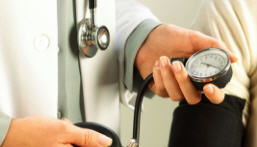The Centers for Medicare and Medicaid Services (CMS) reported on Dec. 6 that health care spending in 2016 slowed its growth rate, whereas individuals’ out-of-pocket costs rose.
 In 2016 health care expenditures reached $3.3 trillion, an increase of 4.3 percent, following two years of rapid growth during the first years of the Affordable Care Act (ACA) and its expansion of individuals enrolling in health care plans.
In 2016 health care expenditures reached $3.3 trillion, an increase of 4.3 percent, following two years of rapid growth during the first years of the Affordable Care Act (ACA) and its expansion of individuals enrolling in health care plans.
Per capita spending on health care increased by $354, reaching $10,348. Out-of-pocket spending increased 3.9 percent ― the biggest annual growth in nine years.
In the journal Health Affairs, CMS auditors noted:
Enrollment trends drove the slowdown in Medicaid and private health insurance spending growth in 2016, while slower per enrollee spending growth influenced Medicare spending. Furthermore, spending for retail prescription drugs slowed, partly as a result of lower spending for drugs used to treat hepatitis C, while slower use and intensity of services drove the slowdown in hospital care and physician and clinical services.
Health care as a share of the Gross Domestic Product (GDP) rose to 17.9 percent, an increase of 0.2 percent, which outpaced the growth of the national economy.
From 2008 to 2013, following the Great Recession and preceding Obamacare, health care spending rose just 3.8 percent annually as millions lost their jobs and their health insurance.
“Over the last decade, the U.S. has experienced unique events that have affected the health care sector, including the most severe economic recession since the Great Depression, major changes to the health care system because of the ACA, and historic lows in medical price inflation,” Micah Hartman, a statistician in the Office of the Actuary and lead author of the report, said in a press release.
Additional highlights from the report:
- Private health insurance spending increased 5.1 percent to $1.1 trillion in 2016, which was slower than the 6.9 percent growth in 2015. The deceleration was largely driven by slower enrollment growth in 2016 after two years of faster enrollment growth due to ACA coverage expansion.
- Medicare spending grew 3.6 percent to $672.1 billion in 2016, which was slower growth than the previous two years when spending grew 4.8 percent in 2015 and 4.9 percent in 2014. The slower growth in 2016 was due to slower growth in spending for both Medicare fee-for-service (2.2 percent in 2015 compared to 1.8 percent in 2016) and Medicare Advantage (11.1 percent in 2015 compared to 7.4 percent in 2016).
- Medicaid spending growth slowed in 2016, increasing 3.9 percent to $565.5 billion. State and local Medicaid expenditures grew 3.2 percent in 2016, while federal Medicaid expenditures increased 4.4 percent in 2016. The slower overall growth in Medicaid spending was much lower than in the previous two years, when Medicaid spending grew 11.5 percent in 2014 and 9.5 percent in 2015. The higher growth in 2014 and 2015 was due in part to the initial impacts of the ACA’s expansion of Medicaid enrollment during that period.
- Out-of-pocket spending includes direct consumer payments such as copayments, deductibles, and spending not covered by insurance. Out-of-pocket spending grew 3.9 percent to $352.5 billion in 2016, faster than the 2.8 percent growth in 2015. Additionally, 2016 was the fastest rate of growth since 2007 and was higher than the average annual growth of 2.0 percent during 2008-15. The faster growth in 2016 was due in part to a continued shift towards enrollment in high-deductible health plans, which was somewhat offset by a continued decrease in the number of uninsured in 2016.
- Retail prescription drug spending slowed in 2016, increasing 1.3 percent to $328.6 billion. The slower growth in 2016 follows two years of significant growth in 2014 and 2015, 12.4 percent and 8.9 percent, respectively. This significant growth in 2014 and 2015 was largely attributable to increased spending on new medicines and price growth for existing brand-name drugs, particularly for drugs used to treat hepatitis C. Growth slowed in 2016 primarily due to fewer new drug approvals, slower growth in brand-name drug spending as spending for hepatitis C drugs declined, and a decline in spending for generic drugs as price growth slowed.
- In 2016, the federal government and households accounted for the largest shares of spending (28 percent each) followed by private businesses (20 percent), state and local governments (17 percent), and other private revenue (7 percent). After two consecutive years of rapid growth (10.9 percent in 2014 and 8.9 percent in 2015), federal government spending for health care slowed, increasing 3.9 percent in 2016. The primary reason for the deceleration in federal spending growth in 2016 was federal Medicaid spending, which grew more slowly in 2016 as a result of less Medicaid enrollment growth.
The CMS Office of the Actuary’s report will appear on the CMS website at: https://www.cms.gov/Research-Statistics-Data-and-Systems/Statistics-Trends-and-Reports/NationalHealthExpendData/NationalHealthAccountsHistorical.html.
